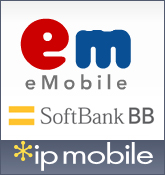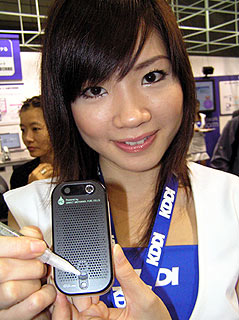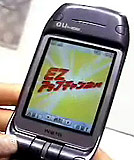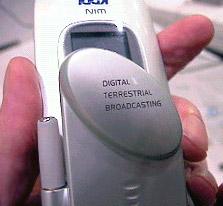Wireless Watch Japan – Top Stories for 2005
 We published 596 articles on Wireless Watch Japan in 2005 and thought you might enjoy looking back at the most popular Japan mobile industry highlights from the year. The links below, three from each month, represent the two top stories (by volume of visitor requests) and a third which we consider a significant development in that 30-day period.
We published 596 articles on Wireless Watch Japan in 2005 and thought you might enjoy looking back at the most popular Japan mobile industry highlights from the year. The links below, three from each month, represent the two top stories (by volume of visitor requests) and a third which we consider a significant development in that 30-day period.
It’s been a year of explosive year in the mobile world and 2006 is set to be even much more interesting with faster mobile networks, more powerful handsets and compelling contents settling into the mainstream. Here in Japan, we are expecting a dramatic increase in m-commerce adoption, driven in part by Mobile Suica’s launch, set for later in January and the start of ‘One-Seg’ digital TV broadcasting starting — on all three carriers — on 1 April (no joke). We also see a potential increase in churn as a result of the (belated) introduction of number portability and with three new carriers entering the market, even DoCoMo is concerned.
One of the more obvious action areas in 2006 will be the increase of M&A activity at all levels; in particular, look for consolidation in the Japanese handset market. Meanwhile, lets boldly predict that we’ll have at least a few 3.5G (HSDPA) phones on the streets of Tokyo by this time next year. Interesting times ahead, indeed. Get all the skinny after the jump!


 Back in 1999, when I was editing Computing Japan magazine, we ran an article entitled “
Back in 1999, when I was editing Computing Japan magazine, we ran an article entitled “
 CEATEC, otherwise known as ‘Disneyland for mobi-keeners,’ is possibly planet Earth’s most intense concentration of mobile goodies. KDDI’s “EZ Channel” system, launched together with flat-rate data billing and the high-speed 1X EV-DO “WIN” 3G network in late 2003, is one of the few content services optimised for the network’s 2.4-Mbps nominal speed. WWJ went to CEATEC to grab the details on EZ Channel, which includes a unique overnight download feature that makes use of the quietest time of the day to deliver up to 3 megabytes of video programming to subscribers’ handsets while the network snoozes.
CEATEC, otherwise known as ‘Disneyland for mobi-keeners,’ is possibly planet Earth’s most intense concentration of mobile goodies. KDDI’s “EZ Channel” system, launched together with flat-rate data billing and the high-speed 1X EV-DO “WIN” 3G network in late 2003, is one of the few content services optimised for the network’s 2.4-Mbps nominal speed. WWJ went to CEATEC to grab the details on EZ Channel, which includes a unique overnight download feature that makes use of the quietest time of the day to deliver up to 3 megabytes of video programming to subscribers’ handsets while the network snoozes. We have signal. Mobile digital terrestrial TV broadcasting hits the wireless airwaves in Japan April 1st, 2006. Japanese telecom carriers and commercial broadcasters will be ready to start simulcasts of hybrid terrestrial digital programming and data feeds to cellular phones in just a few months. “Our handsets will be ready to comply with that date and we are targeting March/April 2006 release of mobile digital terrestrial TV phones,” NTT DoCoMo spokesperson Tomoko Tsuda told WWJ.
We have signal. Mobile digital terrestrial TV broadcasting hits the wireless airwaves in Japan April 1st, 2006. Japanese telecom carriers and commercial broadcasters will be ready to start simulcasts of hybrid terrestrial digital programming and data feeds to cellular phones in just a few months. “Our handsets will be ready to comply with that date and we are targeting March/April 2006 release of mobile digital terrestrial TV phones,” NTT DoCoMo spokesperson Tomoko Tsuda told WWJ.